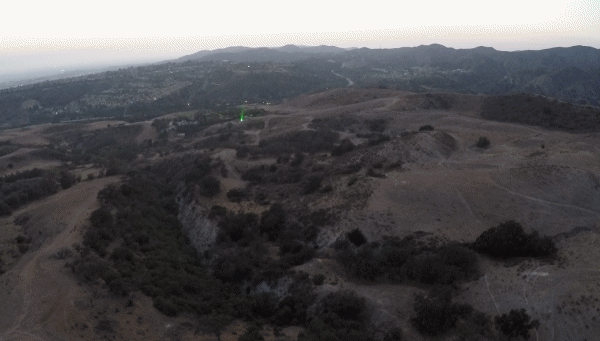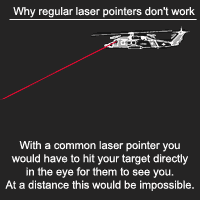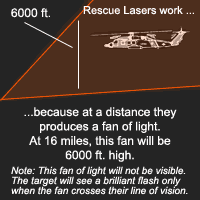Shining a laser pointer at a manned aircraft is illegal because of the obvious danger to the pilot(s). Shining a laser at a UAV with a camera is also dangerous to the camera (if close enough), and can cause the pilot's remote video feed to wash out, which is akin to blinding a pilot.
But nobody said that it's wrong to shine a laser at your OWN drone... IF it's far enough away, AND far from any other aircraft, AND you're prepared for video washout, for the sake of "science". So I did. Here's the result just after sunset (very few lights were on yet), at half a mile away (roughly 300 feet above take-off level). It's an ordinary green handheld laser pointer. I was surprised at how much video washout occurred even at that distance and time of day. The washout would be far worse, of course, later at night.
Bottom line: This result convinced me more than ever that shining a laser pointer at an airplane should be treated as if it were a physical attack on the aircraft, because it really is.

But nobody said that it's wrong to shine a laser at your OWN drone... IF it's far enough away, AND far from any other aircraft, AND you're prepared for video washout, for the sake of "science". So I did. Here's the result just after sunset (very few lights were on yet), at half a mile away (roughly 300 feet above take-off level). It's an ordinary green handheld laser pointer. I was surprised at how much video washout occurred even at that distance and time of day. The washout would be far worse, of course, later at night.
Bottom line: This result convinced me more than ever that shining a laser pointer at an airplane should be treated as if it were a physical attack on the aircraft, because it really is.





